5 Best Schooling Fish for a Saltwater Aquarium
Posted by on 08/17/2023
Hobbyists may be surprised to learn that fish can demonstrate schooling behavior in a saltwater aquarium. However, you'll likely need a massive tank that can hold quite a few of the species on this list.
If you're interested in seeing schooling behavior in your saltwater tank, here are 5 of your best options.
December's Giveaways on Light Fish
Schooling vs Shoaling
Many hobbyists often confuse schooling and shoaling behavior. Shoaling is when fish move in loosely-coupled groups, while Schooling is when fish move in tight groups, moving in unison and the same direction. Both behaviors serve defensive purposes.
Unless you're the owner of a national aquarium, odds are what you're looking for is shoaling behavior in an at-home aquarium, and these 5 species should get the job done.
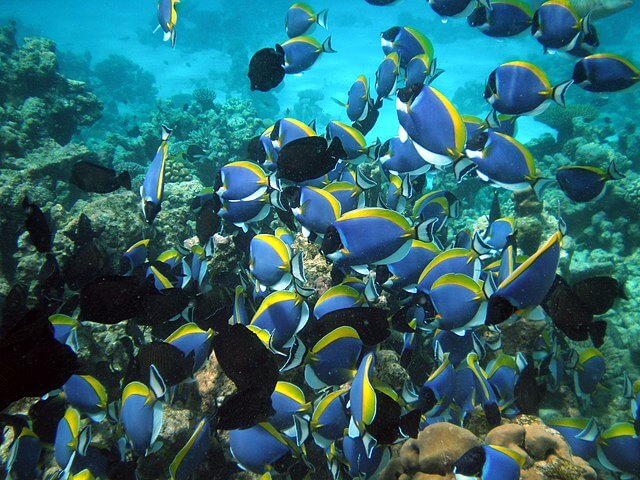
Our Top 5
Before we take a look at some potential fish options, hobbyists should be aware that you'll need a massive tank to house multiple fish of the same species. Aim for at least 200 gallons if you're looking to see this unique fish behavior in a saltwater tank.
To prevent territorial disputes, it's also important to introduce multiple fish at once so that a hierarchy can form between individual fish.
Blue Chromis
A classic saltwater fish, Blue Chromis are affordable and easy to find for sale. Keeping a small school of these fish in a saltwater aquarium is possible, but multiple fish must be introduced to an aquarium at once.
These fish prefer to be kept in groups, just make sure your tank is large enough to house all of these fish. Aim for a 6-foot-long tank that's at least 200 gallons.
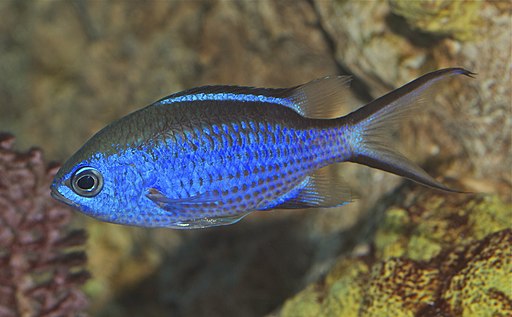
Yellow Tang
With captive-bred offerings from Biota the Yellow Tang is a popular saltwater fish that is sure to please in a large enough tank.
Similar to other marine fish, these fish should be introduced at the same time, so that a "pecking order" can be established amongst them. While hobbyists have reported success keeping multiple yellow tangs, always make sure you have a backup plan in case you notice signs of aggression.
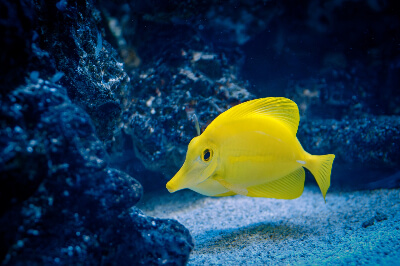
Longspine Cardinalfish
A relatively small fish, the Longspine Cardinalfish will only grow to be about 2 inches in size and has a peaceful temperament. Similar to the Yellow Tang, these fish will also need to sort out a "pecking order" amongst a group.
However, once a hierarchy has been established, these fish will do quite well as a group and will display schooling behavior.
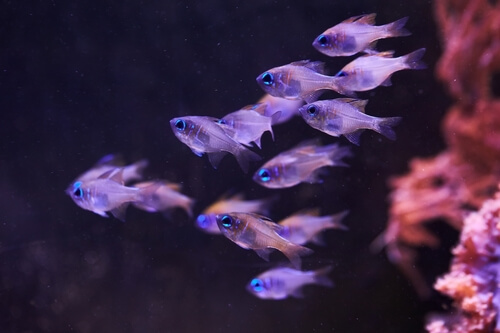
Mono argentis
If you own a massive aquarium (450 gallons+), then a school of Mono argentis (also known as Silver Moony) is a viable option for those looking to see schooling behavior in their saltwater aquariums. While primarily brackish fish, the species can adapt to a saltwater environment.
Mono argentis are quite large and can grow to reach 12 inches in length. Known for their peaceful temperament, the species prefers a nutritious, plant-based diet.
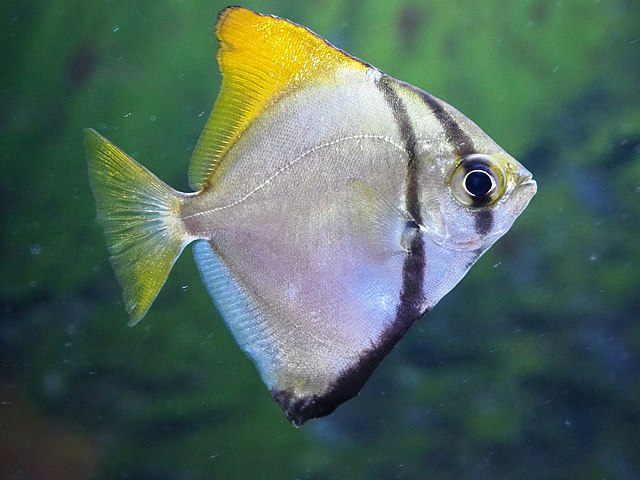
Neon Damsel
Last on our list is the Neon Damsel, also known as the Allen Damsel. While these fish won't shoal as much as Blue Chromis, they can be kept in small groups, but you'll need to monitor them closely for aggressive behavior. Once a dominant male has been established, they should demonstrate a more peaceful temperament. Hobbyists should be aware that these fish love to dig, and a bare-bottomed tank should be considered.
It's rumored that ORA is working on captive-bred Allen damsels , which if successful, will likely display more peaceful temperaments compared to their wild-caught alternatives.
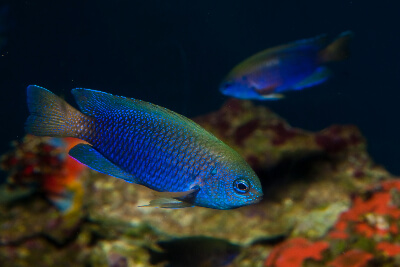
A Note on Wrasses
It's common to see wrasses, such as the pink streaked wrasse recommended as a schooling fish. However, wrasses do not technically school, they form harems, where a group of females stay close to a dominant male.
While this behavior looks similar to schooling, it serves a more reproductive purpose, rather than used for defense.
Conclusion
As you can see, adding schooling fish to a saltwater tank comes with a lot of responsibility. Due to the territorial behavior of marine fish, it's the responsibility of the aquarist to have a backup plan ready to go in case their fish show aggressive behavior.
However, if you provide a large enough aquarium, maintain stable water parameters, provide a well-balanced diet, and introduce a group of fish to an aquarium at once, you'll be rewarded with an aquarium that features one of the most sought-after fish behaviors in the hobby.
Do you have experience keeping schooling fish in your saltwater aquarium? Let us know in the comments, and be sure to visit our marketplace where you can find saltwater species like the Yellow Tang up for sale from other hobbyists.
December's Giveaways on Light Fish


